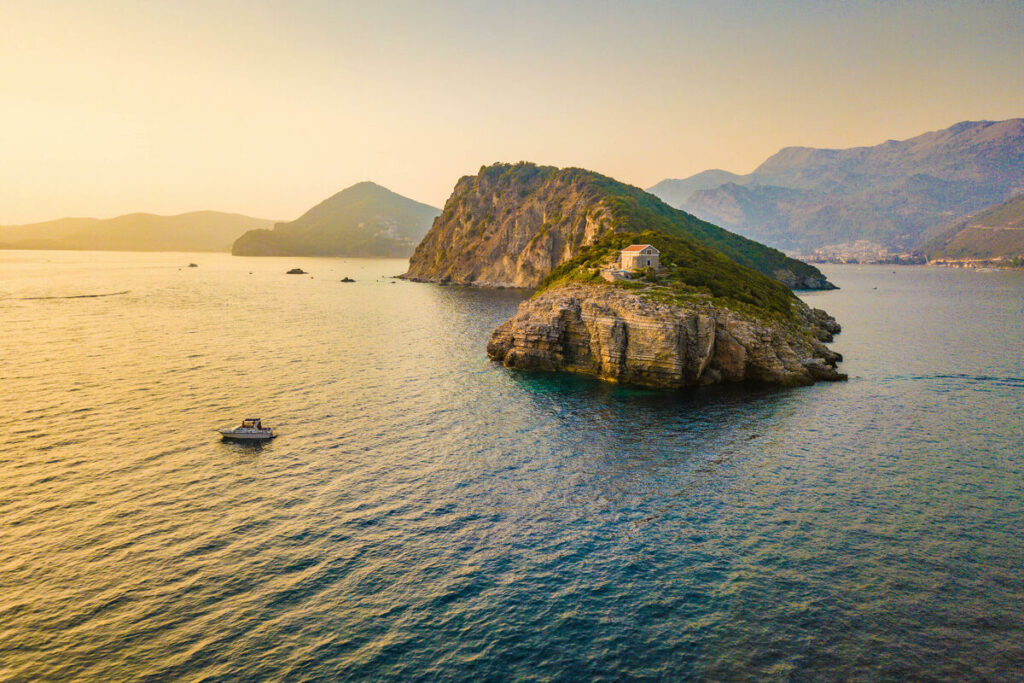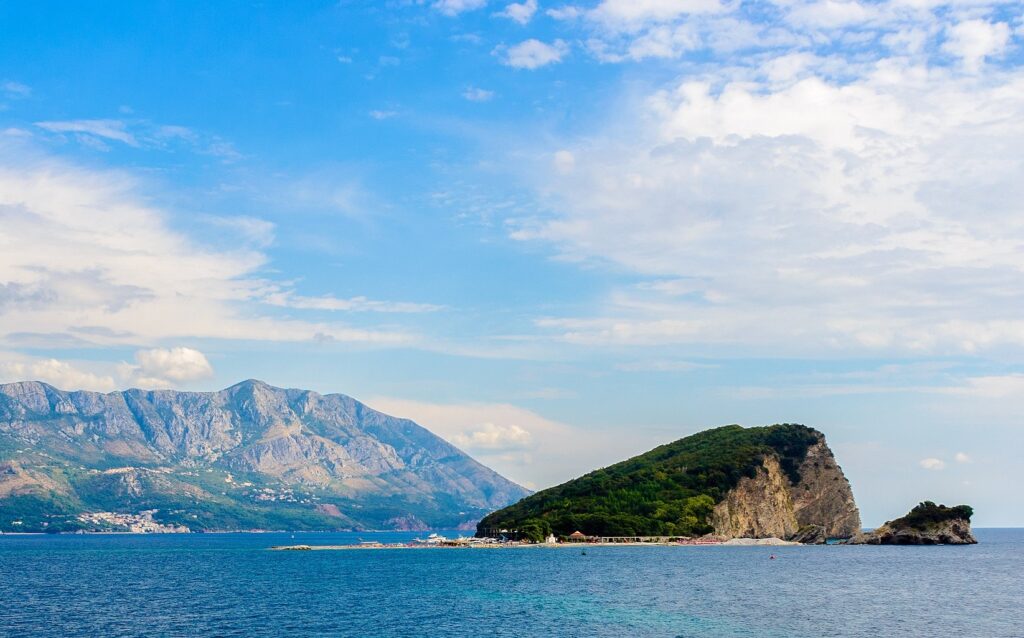geography of St. Nicholas island
Geography of St. Nicholas island , often affectionately referred to as the ‘Island of the Sveti Nikolas,’ holds a significant geographical position off the coast of Montenegro. Nestled in the azure waters of the Adriatic Sea, it is the largest island in the Budva municipality, offering a serene contrast to the lively buzz of the mainland.
The island stretches across a modest area but is renowned for its distinctive topographical features. It boasts a fascinating blend of rocky outcrops, undulating hills, and verdant green spaces. These landscapes are a testimony to the island’s geological evolution over the millennia. The southern part of St. Nicholas Island is particularly intriguing for its sand and pebble beaches, which become a magnet for tourists during the summer months. Here, the shimmering waters provide a refreshing reprieve from the Mediterranean heat, making it an ideal spot for swimming and sunbathing.
However, beyond its obvious beauty, geography of St. Nicholas island also acts as a vantage point, offering panoramic views of the Montenegrin coast. On clear days, from certain elevated parts of the island, one can even catch a glimpse of the distant mountain ranges, serving as a serene backdrop to the bustling coastal towns.
In conclusion, St. Nicholas Island isn’t just a regular piece of land amidst the Adriatic waters. It’s a geographical marvel that tells tales of ancient times, all while providing modern-day visitors with unparalleled natural beauty and tranquility. Whether you’re a geology enthusiast or a casual tourist, the island’s unique features are bound to captivate your imagination.

history of St. Nicholas Island
History of St. Nicholas island, often simply referred to as “Sveti Nikola” by the locals, is more than just a picturesque spot in the Adriatic Sea. It’s an island steeped in history, legends, and tales that span centuries.
Historical records suggest that the island had been inhabited since ancient times. Ancient structures and ruins, which now lay scattered across the island, stand testament to the various civilizations that once called this place home. From Illyrian tribes to Roman settlers, St. Nicholas Island has been a silent witness to the ebb and flow of empires and cultures.
One of the most intriguing legends associated with the island is that of a hidden church dedicated to St. Nicholas, the patron saint of sailors. It is believed that the island was named in honor of this very saint. As the legend goes, sailors stranded during stormy nights would see a mysterious light emanating from the island, guiding them safely to its shores. They believed it was the blessing of St. Nicholas himself. Over the years, many have tried to find the remnants of this legendary church, but its exact location remains one of the island’s greatest mysteries.
Another tale often whispered among locals is that of buried pirate treasure. Centuries ago, St. Nicholas Island, given its strategic location, was a haven for pirates and corsairs. Legends tell of a vast treasure buried deep within the island’s rocky terrain, guarded by the spirit of an ancient pirate captain.
In modern times, while the allure of treasure hunts has waned, the island’s rich history continues to draw visitors. The tales of ancient civilizations, legendary churches, and pirate treasures make St. Nicholas Island a destination not just for its natural beauty but also for its vibrant past.
In essence, history of St. Nicholas island serves as a captivating blend of history and folklore, making it an essential stop for anyone seeking a deeper understanding of the region’s rich tapestry of tales and truths

architecture of St. Nicholas island
architecture of St. Nicholas island is not only a haven of natural beauty but also a treasure trove of architectural and cultural relics. From ancient ruins to preserved medieval structures, the island offers a rich tapestry of historical remnants that resonate with tales of bygone eras.
A hallmark of St. Nicholas Island’s architectural heritage is the Byzantine-style chapel located near the island’s center. Dedicated to St. Nicholas himself, the chapel is adorned with intricately designed frescoes and mosaics, offering a window into the artistic sensibilities of past civilizations. This sacred edifice stands as a testament to the island’s longstanding Christian traditions and its patron saint’s significance.
Moreover, the remnants of fortifications scattered around the island hint at its strategic importance in earlier times. These ancient stone walls and watchtowers, once serving as the island’s defense against pirates and invaders, are now silent witnesses to the island’s tumultuous past.
Another intriguing site is the “Monk’s Retreat.” Nestled amidst the dense forested area, this secluded cave is believed to have been the dwelling place of a solitary monk during medieval times. The cave’s interior bears inscriptions and symbols, lending credence to tales of spiritual contemplations and hermitic life led by the island’s erstwhile inhabitants.
St. Nicholas Island’s cultural tapestry also extends to its traditions. Annual festivals celebrating the feast day of St. Nicholas draw pilgrims and tourists alike. These events, marked by processions, traditional dances, and music, encapsulate the island’s rich blend of religious reverence and cultural festivities.
In essence, architecture of St. Nicholas island stands as a living museum, offering visitors a unique blend of natural beauty and rich historical narratives. Its architectural and cultural monuments serve as bridges to the past, inviting one to delve deep into the island’s multifaceted heritage.

tourist routes on St. Nicholas island
Tourist routes on St. Nicholas island, a gem in the Adriatic Sea, beckons travelers with its blend of natural wonders and historical attractions. Beyond its cultural richness, the island offers a plethora of activities tailored for every kind of adventurer.
One of the must-do activities on St. Nicholas Island is embarking on a guided historical tour. Wander through ancient ruins, Byzantine-style chapels, and old fortifications, all while immersing yourself in tales of bygone eras. These tours often culminate at the island’s highest viewpoint, providing a panoramic vista of the azure waters juxtaposed against the island’s lush greenery.
For nature enthusiasts, there’s no better way to explore than by hiking. St. Nicholas Island boasts well-marked trails that meander through dense forests, coastal edges, and hidden coves. The island’s unique topography makes it a hiker’s paradise, offering varying degrees of challenges suitable for both novices and seasoned trekkers.
Water sports enthusiasts aren’t left out either. The pristine waters surrounding the island are ideal for snorkeling and diving. Discover vibrant marine life, explore underwater caves, or simply bask in the serenity of the island’s secluded beaches.
For a more relaxed experience, join a boat tour that circles St. Nicholas Island, providing a unique perspective of its rugged coastline and hidden bays. These tours often come with opportunities for swimming, picnicking, and even fishing.
Evenings on St. Nicholas Island are magical. Many tourists opt for beachside campfires, where they can indulge in local seafood delicacies, listen to traditional music, and share stories under the canopy of stars.
In conclusion, whether you’re a history buff, a nature lover, or someone seeking a tranquil retreat, tourist routes on St. Nicholas island promises a memorable experience. Its diverse array of activities ensures that every visitor leaves with cherished memories and a yearning to return.

